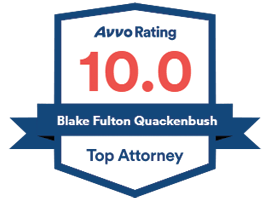Debt headaches don’t have to last forever. Whether you’re a homeowner in Eagle River, a military family in Joint Base Elmendorf–Richardson, or a small-business owner in downtown Anchorage, Alaska’s bankruptcy laws offer a legal lifeline—if you follow every rule and deadline. This extensive resource explains how the process works, why hiring a bankruptcy attorney improves success rates, and how BFQ Law Alaska guides clients from the first consultation to final discharge.
Table of Contents
- ➤ Bankruptcy Overview for Alaskans
- ➤ Current Bankruptcy Trends in Alaska
- ➤ Why and When to Hire a Bankruptcy Attorney
- ➤ Chapter 7 vs. Chapter 13
- ➤ Eligibility & Means Test
- ➤ Step-by-Step Filing Process
- ➤ Alaska & Federal Exemptions (2025 Update)
- ➤ Court Costs & Attorney Fees
- ➤ Impact on Credit & Rebuilding Tips
- ➤ Alternatives to Bankruptcy
- ➤ How BFQ Law Alaska Helps
- ➤ Common Mistakes to Avoid
- ➤ Frequently Asked Questions
- ➤ Conclusion
Bankruptcy Overview for Alaskans
The Bankruptcy Basics guide from the U.S. Courts explains that bankruptcy is a federal process that lets qualified debtors erase, restructure, or repay debt under court supervision. Residents of Anchorage, Fairbanks, Juneau, and rural villages file in the United States Bankruptcy Court for the District of Alaska, whose main clerk’s office is a short walk from BFQ Law Alaska’s G Street office.
Because each petition triggers an automatic stay that freezes collections, garnishments, and most lawsuits, many consumers refer to the procedure as an emergency brake on financial freefall. Yet the stay can be lifted if paperwork is incomplete or creditors prove bad-faith filing, so engaging an experienced bankruptcy lawyer greatly reduces risk.
Current Bankruptcy Trends in Alaska
According to the Administrative Office of the U.S. Courts quarterly filings report, Alaska logged 941 non-business bankruptcies in 2024, 71 % of which were Chapter 7 and 26 % Chapter 13—mirroring national ratios. Filings rose 8 % year-over-year, partly due to inflation and higher energy prices in remote regions.
Separate BAPCPA tables for 2024 show that 34 % of Alaskan Chapter 13 filers had filed a prior case within eight years, underscoring the need for tailored repayment plans that actually work.
Why and When to Hire a Bankruptcy Attorney
The U.S. Trustee Program monitors trustees and audits random cases, so accuracy is paramount. A local Chapter 7 attorney or Chapter 13 attorney helps by:
- Completing asset schedules that match Alaska exemption limits.
- Passing the means test or rebutting presumption of abuse.
- Negotiating reaffirmation agreements for vehicles.
- Drafting feasible repayment plans that creditors and trustees accept.
Self-represented (pro se) debtors face nearly double the dismissal rate in the District of Alaska, mainly due to misfiled forms or missed deadlines.
Chapter 7 vs. Chapter 13
The Eastern District of Missouri’s handy Chapter 7 vs. Chapter 13 comparison chart also applies in Alaska. Chapter 7 liquidates non-exempt assets and wipes qualifying unsecured debt in roughly four months, while Chapter 13 creates a three-to-five-year repayment plan that catches up on arrears.
When Chapter 7 Makes Sense
Consumers with mostly unsecured debt, little equity beyond exemptions, and household incomes below median may prefer Chapter 7 for its speed. A bankruptcy attorney near me will still check non-exempt items like second vehicles or snow machines common in rural Alaska.
When Chapter 13 Is Better
Homeowners who owe mortgage arrears or child support often choose Chapter 13. The plan stops foreclosure, protects equity beyond the homestead cap, and lets filers spread IRS priority taxes over 60 months.
Eligibility & Means Test
The means test compares household income to Alaska median figures published by the U.S. Trustee’s means-testing portal. If gross income falls below median, Chapter 7 is presumed valid; if above, mathematical deductions decide eligibility. Military and National Guard members stationed in Alaska can exclude combat pay.
Step-by-Step Filing Process
- Credit Counseling — Pre-filing counseling from an approved agency such as the National Foundation for Credit Counseling fulfills the first requirement.
- Petition & Schedules — Your insolvency attorney drafts the Voluntary Petition, Schedules A–J, and Statement of Financial Affairs.
- Automatic Stay — Filing triggers an immediate stay that halts garnishments and collections.
- 341 Meeting — A trustee questions the debtor under oath about income and assets; creditors may attend.
- Financial Management Course — Debtor education from an approved provider must be completed before discharge.
- Discharge or Plan Completion — Chapter 7 discharges eligible debts roughly 60 days after the 341 Meeting; Chapter 13 discharges occur after final plan payments.
Alaska & Federal Exemptions (2025 Update)
The District of Alaska’s official Schedule C exemption chart effective April 1 2025 lists updated caps. Highlights include:
- Homestead — $72,900 equity in a primary residence.
- Vehicle — $4,050 equity in one motor vehicle.
- Personal Property — $3,000 total in household furnishings.
- Tools of Trade — $3,000 value.
Debtors may elect federal exemptions instead, which currently offer a $27,900 wildcard that can shield cash proceeds from sold assets. A bankruptcy law firm will compare both sets against your asset mix.
Court Costs & Attorney Fees
The District of Alaska fee schedule sets filing fees at $338 for Chapter 7 and $313 for Chapter 13. Ancillary motions—like converting a case—carry additional fees.
Pooled data in the National Consumer Law Center attorney-fee survey notes Anchorage averages of $1,250–$2,000 for straightforward Chapter 7 petitions and $3,000–$4,500 for Chapter 13 plans.
Impact on Credit & Rebuilding Tips
Experian warns that bankruptcy can shave up to 200 points off a high credit score (see Experian guide). Chapter 7 stays on reports for ten years; Chapter 13 for seven. Still, rebuilding is possible:
- Obtain a secured credit card and pay on time.
- Keep utilization below 30 %.
- Add utility and phone payments via Experian Boost.
- Monitor reports to catch errors quickly.
For older tax debt, the IRS explains the three-year, two-year, and 240-day rules that must be met before discharge.
Alternatives to Bankruptcy
If your debt load is moderate, consider nonprofit counseling: InCharge Debt Solutions’ Alaska program offers free sessions, budgets, and debt-management plans. Debt settlement or home-equity refinancing may also work but carry credit and tax consequences.
How BFQ Law Alaska Helps
Address: 807 G Street, Suite 100, Anchorage, AK 99501 Email: blake@BFQLaw.com Contact Page: Schedule a consultation
Integrated Services
Because bankruptcy often overlaps with divorce settlements, personal-injury proceeds, or probate estates, BFQ’s team coordinates across its family-law, personal-injury, wills & trusts, civil-litigation, and mediation divisions to protect the client’s broader interests.
Common Mistakes to Avoid
- Transferring property to relatives within one year of filing.
- Running up credit-card balances immediately before petition.
- Missing the post-filing debtor-education deadline.
- Selecting an exemption scheme without comparing values.
Frequently Asked Questions
Filing pro se is allowed, but dismissal rates are higher; even a low-cost consultation helps avoid critical mistakes.
Simple, uncontested Chapter 7 cases often discharge in four to six months.
Yes—Alaska exempts PFDs up to $1,500 per person; excess amounts may be part of the estate.
The automatic stay halts existing garnishments immediately upon filing, unless the debt is for domestic support.
Some lenders approve auto loans within weeks, though rates improve as you rebuild credit.
Conclusion
Bankruptcy isn’t the end of the road; it’s a federally protected reset button. Working with a knowledgeable bankruptcy attorney—especially one who understands Alaska exemptions and trustee expectations—helps you transition from financial chaos to credible credit rebuild. Contact BFQ Law Alaska today to explore your debt-relief options and start fresh.








